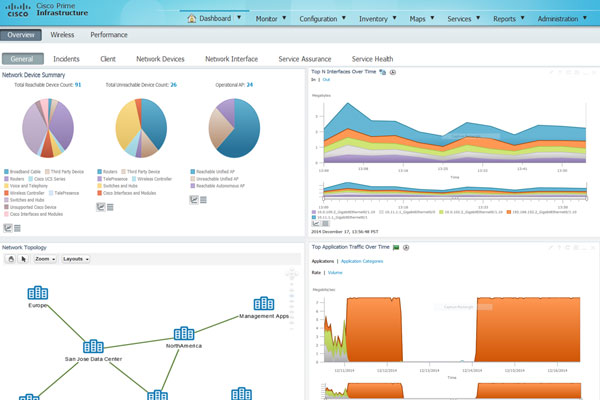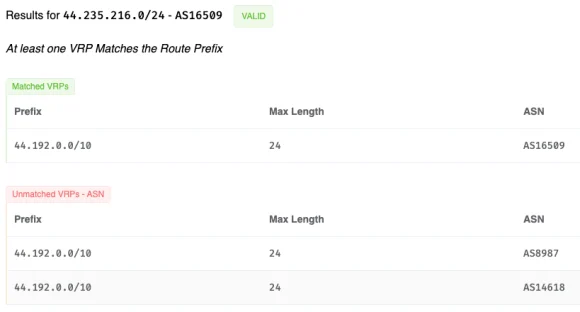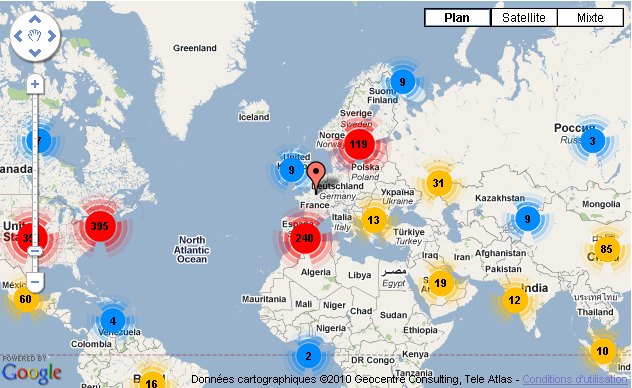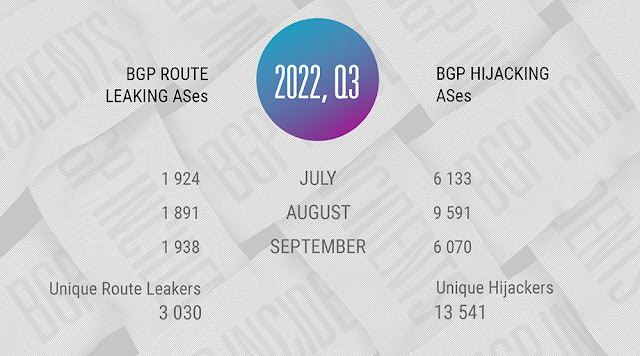Оборудование регионального уровня непосредственно связано с оборудованием сетей клиентов сети IP/MPLS ПАО «Ростелеком» и, следовательно, подвергается максимальному риску атак из сетей клиентов ПАО «Ростелеком».
В основном защита от несанкционированного доступа производится аналогично защите для маршрутизаторов ядра.
Поскольку пиринг с сетями клиентов и с сетями других операторов происходит с использованием протокола BGP, то необходима, прежде всего, фильтрация префиксов, приходящих от BGP маршрутизаторов сторонних сетей с целью недопущения попадания некорректной маршрутной информации, анонсируемой маршрутизаторами сторонних сетей в результате ошибки или умышленно. Фильтрация префиксов IPv4 осуществляется на базе списка, приведённого в [RFC6890]. Данный список содержит адреса следующих зарезервированных IETF и не подлежащих выделению сетей:
- 0.0.0.0/8;
- 0.0.0.0/1 – 0.0.0.0/32;
- 10.0.0.0/8;
- 172.16.0.0/12;
- 192.168.0.0/16;
- 127.0.0.0/8;
- 192.0.0.0/24;
- 192.0.2.0/24;
- 169.254.0.0/16;
- 100.64.0.0/10;
- 192.88.99.0/24;
- 198.18.0.0/15;
- 198.51.100.0/24;
- 203.0.113.0/24;
- 224.0.0.0/4;
- 240.0.0.0/4;
Фильтрация префиксов IPv6 осуществляется на базе списка, указанного в [RFC6890] следующие префиксы:
- ::/128;
- ::1/128;
- FE80::/10;
- FC00::/7;
- 2001::/23;
- 2002::/16;
- 64:ff9b::/96;
- ::ffff:0:0/96;
- 100::/64;
С целью уменьшения общего числа префиксов фильтруются все префиксы с маской, длина которой превышает 24 бита для IPv4 и 48 бит для IPv6.
Такая же фильтрация применяется и при передаче префиксов за пределы автономной системы Ростелеком.
Пример политики для фильтрации неиспользуемых в сети Internet префиксов на маршрутизаторах Juniper:
|
protocols { bgp { group INET_Customers { type external; neighbor 1.1.1.2 { description «### Test Client ###»; import sanity-check; export sanity-check; peer-as 65432; } } group INET_v6_Customers { type external; family inet6 { unicast; } neighbor 1::2 { description «### Test IPv6 Client ###»; import v6-sanity-check; export v6-sanity-check; peer-as 65432; } } } } policy-options { policy-statement sanity-check { term reject-bogons { from policy bogons; then reject; } term accept-blackhole { from community type_blackhole_route; then next policy; } term reject-long-prefixes { from { route-filter 0.0.0.0/0 prefix-length-range /25-/32 reject; } } } policy-statement bogons { term match-rfc6890-networks { from { route-filter 10.0.0.0/8 orlonger accept; route-filter 172.16.0.0/12 orlonger accept; route-filter 192.168.0.0/16 orlonger accept; route-filter 0.0.0.0/1 through 0.0.0.0/32 accept; route-filter 0.0.0.0/8 orlonger accept; route-filter 127.0.0.0/8 orlonger accept; route-filter 192.0.0.0/24 orlonger accept; route-filter 192.0.2.0/24 orlonger accept; route-filter 169.254.0.0/16 orlonger accept; route-filter 192.88.99.0/24 orlonger accept; route-filter 224.0.0.0/4 orlonger accept; route-filter 240.0.0.0/4 orlonger accept; route-filter 198.18.0.0/15 orlonger accept; route-filter 198.51.100.0/24 orlonger accept; route-filter 203.0.113.0/24 orlonger accept; route-filter 100.64.0.0/10 orlonger accept; } } term reject-others { then reject; } } policy-statement v6-sanity-check { term reject-bogons { from policy v6-bogons; then reject; } term reject-long-prefixes { from { route-filter ::/0 prefix-length-range /48-/128 reject; } } } policy-statement v6-bogons { term match-rfc6890-networks { from { route-filter ::/128 exact accept; route-filter ::1/128 exact accept; route-filter ::/1 through ::/128 accept; route-filter FE80::/10 orlonger accept; route-filter FC00::/7 orlonger accept; route-filter 2001::/23 orlonger accept; route-filter 2002::/16 orlonger accept; route-filter 64:ff9b::/96 orlonger accept; route-filter ::ffff:0:0/96 orlonger accept; route-filter 100::/64 orlonger accept; } } term reject-others { then reject; } } } |
|---|
Для снижения вероятности программных сбоев, которые могут произойти в случае большого количества транзитных автономных систем в пути для какого-то префикса, принимаются только анонсы, количество автономных систем в AS_PATH которых не превышает 50. Такое значение не позволяет принимать слишком длинные AS_PATH и в то же время достаточно для корректно сформированных анонсов.
Пример контроля количества AS в принимаемых анонсах на маршрутизаторах Juniper Networks:
|
protocols { bgp { group INET_Customers { type external; neighbor 1.1.1.2 { description «### Test Client ###»; import restrict-long-as; peer-as 65432; } } group INET_v6_Customers { type external; family inet6 { unicast; } neighbor 1::2 { description «### Test IPv6 Client ###»; import restrict-long-as; peer-as 65432; } } } } policy-options { policy-statement restrict-long-as { term reject-long-as_path { from as-path too_long_as_path; then reject; } } as-path too_long_as_path «.{50,}»; } |
|---|
Пример контроля количества AS в принимаемых анонсах на маршрутизаторах Cisco Systems:
|
router bgp 12389 bgp maxas-limit 50 ! |
|---|
Также необходимо запретить приём от клиентов префиксов Ростелеком и маршрута по умолчанию. Значения BGP Community, не предназначенные для использования клиентами (раздел «3.2.1 Маркировка маршрутов»), должны быть удалены.
Пример запрета приёма префиксов Ростелеком и маршрута по умолчанию:
|
protocols { bgp { group INET_Customers { type external; neighbor 1.1.1.2 { description «### Test Client ###»; local-address 1.1.1.1; import INET_CUSTOMER_in; peer-as 65432; } } group INET_v6_Customers { type external; family inet6 { unicast; } neighbor 1::2 { description «### Test IPv6 Client ###»; local-address 1::1; import INET__v6_CUSTOMER_in; peer-as 65432; } } } } policy-options { policy-statement INET_CUSTOMER_in { term reject-RT-aggregate { from policy RT-aggregate; then reject; } term reject-RT-longer-prefixes { from policy RT-longer-prefixes; then reject; } term reject-default-route { from { route-filter 0.0.0.0/0 exact; } then reject; } term remove-12389-communities { then { community delete 12389:1-3X; community delete 12389:1UZZ; } } } policy-statement RT-aggregate { term match-RT-aggregate-networks { from { route-filter 87.226.128.0/17 exact accept; route-filter 79.133.64.0/19 exact accept; route-filter 92.50.192.0/18 exact accept; route-filter 94.25.0.0/17 exact accept; } } term reject-others { then reject; } } policy-statement RT-longer-prefixes { term match-RT-longer-prefixes { from { route-filter 87.226.128.0/17 longer accept; route-filter 79.133.64.0/19 longer accept; route-filter 92.50.192.0/18 longer accept; route-filter 94.25.0.0/17 longer accept; } } term reject-others { then reject; } } policy-statement INET_v6_CUSTOMER_in { term reject-RT-v6-aggregate { from policy RT-v6-aggregate; then reject; } term reject-RT-v6-longer-prefixes { from policy RT-v6-longer-prefixes; then reject; } term reject-default-route { from { route-filter ::/0 exact; } then reject; } term remove-12389-communities { then { community delete 12389:1-3X; community delete 12389:1UZZ; } } } policy-statement RT-v6-aggregate { term match-RT-v6-aggregate-networks { from { route-filter 2A01:620::/32 exact accept; } } term reject-others { then reject; } } policy-statement RT-v6-longer-prefixes { term match-RT-v6-longer-prefixes { from { route-filter 2A01:620::/32 longer accept; } } term reject-others { then reject; } } community 12389 members 12389:*; community 12389:1-3X members «^12389:.{1,3}$»; community 12389:1UZZ members «^12389:1…$»; } |
|---|
В целях уменьшения влияния анонсов отдельных клиентов на ресурсы маршрутизаторов Сети ограничивается количество префиксов, получаемых от клиентов, значением 1000 для префиксов IPv4 и 100 для IPv6 (это значение может быть изменено для отдельного клиента или пересмотрено для всей Сети при изменении общей ситуации в сети Internet). При превышении 80% от этого значения генерируется сообщение в журнале событий (syslog), а при превышении 100% сессия BGP разрывается и может быть установлена вновь через 30 минут.
Пример ограничения количества принимаемых префиксов на маршрутизаторах доступа:
|
protocols { bgp { group INET_Customers { type external; family inet { unicast { prefix-limit { maximum 1000; teardown 80 idle-timeout 30; } } } } group INET_v6_Customers { type external; family inet6 { unicast { prefix-limit { maximum 100; teardown 80 idle-timeout 30; } } } } } } |
|---|
В существующей сети ПАО «Ростелеком» для защиты от некорректных маршрутов применяется фильтрация на основе информации Routing Arbiter Database, являющейся одной из наиболее полных на сегодняшний день баз информации о зарегистрированных в региональных центрах регистрации (Regional Internet Registry, RIR) объектах (автономные системы, префиксы, принципы взаимодействия с соседями). Такая фильтрация является очень мощным средством обеспечения безопасности и стабильности. Кроме того, процесс получения информации и настройки маршрутизаторов автоматизируется с помощью специализированных программных средств. Если номер автономной системы клиента двухбайтный, для формирования имени фильтра на сети IP/MPLS ПАО «Ростелеком» используется форма CUSTOMER:<ASN>, где <ASN> – номер автономной системы клиента или название AS-SET, AS-NUM или AUT-NUM, зарегистрированные в RIR.
Пример фильтра при приёме маршрутов от клиента:
|
protocols { bgp { group INET_Customers { neighbor 1.1.1.2 { description «### Test Client ###»; import CUSTOMER:65432; peer-as 65432; } } } } policy-options { policy-statement CUSTOMER:65432 { term rtbh { from { community type_blackhole_route; route-filter 2.1.0.0/16 orlonger; route-filter 1.2.3.0/24 orlonger; } then { community add NO_EXPORT; next-hop discard; accept; } } term prefixes { from { route-filter 2.1.0.0/16 upto /24; route-filter 1.2.3.0/24 exact; } then next policy; } then reject; } community NO_EXPORT members no-export; community type_blackhole_route members 12389:55555; } |
|---|
Необходимо отметить, что фильтрация префиксов, получаемых от BGP-маршрутизаторов сторонних сетей, не гарантирует отсутствие входящих пакетов с адресами источников из запрещённых сетей. Как и в случае маршрутизаторов магистрального уровня, необходима настройка списков доступа на внутреннем интерфейсе маршрутизатора, связывающем подсистему управления маршрутизатором с подсистемой коммутации пакетов. Также необходимо запретить возможность записывания данных по протоколу SNMP для всех устройств уровня доступа, кроме маршрутизаторов с функциональностью IP SLA, оставив лишь возможность чтения некоторых параметров необходимых для систем мониторинга и управления, а также для систем биллинга. Для маршрутизаторов с функциональностью IP SLA остается возможность записи по протоколу SNMP в CISCO-RTTMON MIB.
Таким образом, политика безопасности маршрутизаторов доступа в основном совпадает с политикой безопасности маршрутизаторов ядра. Для организации второго рубежа защиты, ориентированного на защиту не отдельного устройства, а сети от несанкционированного доступа и возможности проведения атак типа отказ в обслуживании необходима настройка фильтрации пакетов на клиентских интерфейсах. Универсальный фильтр, запрещающий прохождение пакетов, в адресах назначения которых указаны адреса интерфейсов внутренних устройств сети IP/MPLS ПАО «Ростелеком», кроме тех, которые обеспечивают функционирование публичных сервисов. Для клиентов, использующих только услуги передачи голосового трафика через устройства голосовых сегментов сети IP/MPLS ПАО «Ростелеком», настраиваются списки доступа, разрешающие доступ только к пограничным контроллерам сессий (SBC) на интерфейсах, посредством которых эти клиенты подключаются к сети.
Пример настройки фильтрации на клиентских интерфейсах маршрутизаторов доступа:
|
interfaces { ge-2/0/0 { unit 2 { family inet { filter { input Prohibited_Destinations; } } } } } firewall { filter Prohibited_Destinations { term RTK_IPMPLS_internal { from { address { 87.226.133.0/24; 87.226.134.0/24; 87.226.135.0/24; 87.226.136.0/24; 87.226.137.0/24; 87.226.138.0/24; 87.226.139.0/24; } } then { discard; } } term RTK_IPMPLS_MGMT { from { address { 87.226.129.0/24; 87.226.131.128/27; 10.0.0.0/8; } } then { discard; } } term default-action { then accept; } } } |
|---|
С целью защиты коммутирующих устройств узла:
- протокол VTP (VLAN Trunking Protocol) на коммутаторах переводится в режим transparent;
- приём и передача пакетов Spanning Tree Protocol (STP) запрещается на портах, к которым подключены клиенты;
- защита от перегрузки интерфейса между маршрутизатором и коммутатором излишним трафиком осуществляется путём ограничения скорости входящего трафика на порту подключения клиента;
- для предотвращения перегрузки таблицы MAC адресов коммутатора на интерфейсах подключения клиентов настраивается механизм Port Security, позволяющий коммутатору заучить не более определённого количества MAC адресов на этом порту;
- производится ограничение трафика broadcast/multicast/unknown unicast на интерфейсах подключения клиентов (storm control);
- не применяются протоколы автоматического обнаружения на уровне 2 (CDP, LLDP, LLDP-MED).
Соответствующие настройки коммутаторов описаны в разделе «8 Принципы настройки агрегирующих коммутаторов».










